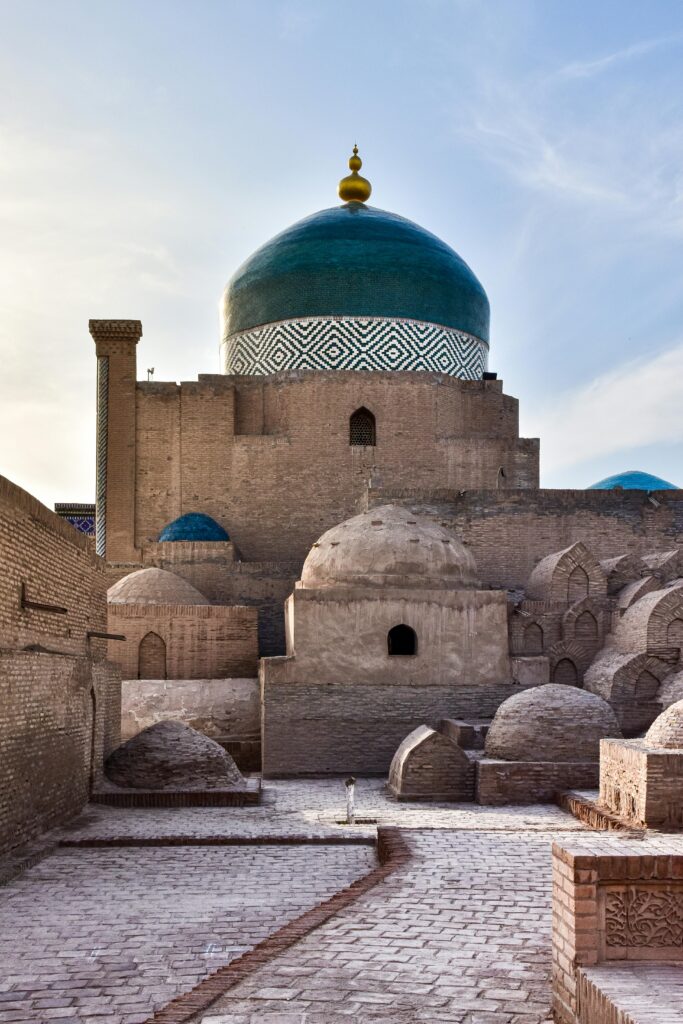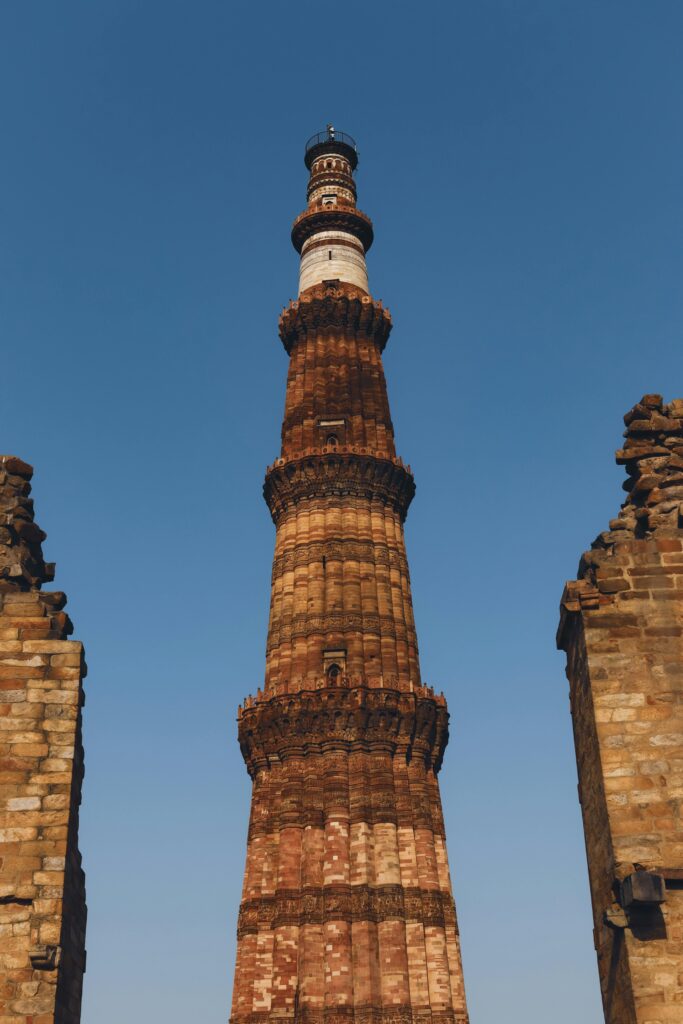In the chapter “Delhi Sultanate Tughluq and Lodi Dynasties”, the Objective is to provide simplified and reliable solved question and answers from the ICSE Class 7 chapter Tughluq and Lodi Dynasties, making exam preparation smooth and stress-free for students.
Studying about the rulers of the Delhi Sultanate can be both exciting and challenging. The Tughluq and Lodi dynasties played a key role in shaping medieval Indian history—but remembering dates, policies, and events can feel overwhelming at times.
This blogpost is here to help! It brings you a collection of solved Q&As that are clear, easy to understand, and perfectly aligned with the ICSE Class 7 History syllabus. Whether you’re revising for a test or simply trying to make sense of this chapter, these ready-made answers will make your learning journey easier and more enjoyable. Let’s dive in and master the topic with confidence!
A. Answer the following questions on Tughluq and Lodi Dynasties :
Why was Babur invited to India?
Ans: Sikandar Lodi was succeeded by his son Ibrahim Lodi in AD 1517. He faced multiple rebellions, and Rana Sanga, the ruler of Mewar, had expanded his empire up to Western Uttar Pradesh, threatening an attack on Agra. Revolts broke out across the Delhi Sultanate, and Ibrahim Lodi suppressed them with great vengeance.
Seeing this instability, Alam Khan, the Sultan’s uncle, and Daulat Khan, the Governor of Punjab, invited Babur, the ruler of Kabul, to invade India. Babur, who had himself been driven out of his homeland, Samarkand, seized the opportunity. This led to the First Battle of Panipat in 1526, where Babur defeated Ibrahim Lodi and killed him, marking the beginning of the Mughal Empire in India.
When was the First Battle of Panipat fought? What was the result?
Ans: The First Battle of Panipat was fought in 1526, where Babur defeated Ibrahim Lodi and killed him.
The result was that the Lodi Dynasty came to an end, and the world witnessed the rise of the Mughal Empire in India.
What were the causes of the downfall of the Delhi Sultanate?
Ans:
- Weak Successors – The later rulers of the Delhi Sultanate were weak and inefficient.
- Internal Conflicts – Continuous noble rivalries and court conspiracies weakened the empire.
- Economic Decline – Excessive taxation, failed economic policies, and corruption led to financial instability.
- Foreign Invasions – Repeated invasions, such as Timur’s invasion in 1398, further weakened the empire.
- Rise of Regional Kingdoms – With the central authority weakening, regional powers such as Mewar, Bengal, and Vijayanagara became independent.
Who was Ghias-ud-din? How did he establish himself as a great Sultan?
Ans: The last Khilji ruler, Khusro Khan, was killed in 1320. The nobles, frustrated by the chaos and instability, raised Ghias-ud-din Tughlaq, also known as Ghazi Malik, to the throne in AD 1320. He built a new city near Delhi, known as Tughlaqabad, which became the capital of his Tughlaq Dynasty.
Ghias-ud-din launched military campaigns, defeating Pratap Rudra Dev of Warangal and annexing parts of Bengal into his empire. He introduced administrative reforms, removed corrupt officials, and improved law and order.
He reduced land revenue to one-tenth of the produce, making taxation fairer. Judicial and police reforms strengthened governance, and he built canals, gardens, and fortifications to ensure public welfare.
These efforts consolidated his rule, making Ghias-ud-din Tughlaq one of the greatest Delhi Sultans.
What were the three main objectives of Firoz Shah Tughlaq as an administrator?
Ans: Firoz Shah Tughlaq, who succeeded Muhammad Bin Tughlaq in AD 1351, aimed to achieve:
- Economic Stability – He reduced taxes in the Doab region and only imposed Islamic taxation as prescribed in the Quran.
- Public Welfare – He launched several public utility projects, such as irrigation canals, hospitals, and educational institutions.
- Abolition of Harsh Punishments – He banned torture and other cruel forms of punishment, bringing justice and peace to his rule.
What did Firoz Shah Tughlaq do for the welfare of his people?
Ans: Firoz Shah Tughlaq focused on economic development and urban expansion. He founded new towns such as Firozabad, Fatehabad, Jaunpur, and Firoz Shah Kotla.
He established 50 madrasas, 40 mosques, 30 colleges, 100 hospitals, and 200 new towns around Delhi. The Firoz Shahi Madrasa at Hauz Khas became a center of higher education for Muslims.
Under his rule, 1200 new gardens were developed in Delhi and surrounding areas, improving agriculture and trade.
Was Muhammad Bin Tughlaq ahead of his time? Explain.
Ans: Yes, Muhammad Bin Tughlaq was ahead of his time due to his ambitious but impractical policies.
- Introduction of Token Currency – Due to a shortage of silver, he introduced bronze coins with the same value as silver coins. However, since the state did not control the minting, people started making counterfeit coins, leading to economic disaster. The currency was later withdrawn, causing a huge financial loss.
- Failed Military Campaigns – He planned grand conquests of China and Persia, but they failed, leading to massive loss of soldiers and wealth.
These policies show that Muhammad Bin Tughlaq had progressive ideas, but his execution failed due to poor planning.
Who was the ruler of the Delhi Sultanate during Timur’s invasion?
Ans: Firoz Shah Tughlaq died in AD 1388 at the age of 80, leading to a struggle for the throne among rival princes.
During Timur’s invasion in 1398, the Delhi Sultanate was leaderless, making it vulnerable. Timur plundered Delhi mercilessly, leaving behind a trail of destruction, bloodshed, and suffering. This invasion led to the final decline of the Delhi Sultanate.
B. Fill in the blanks on Tughluq and Lodi Dynasties :
- Muhammad Bin Tughlaq shifted his capital from Delhi to Daulatabad.
- Muhammad Bin Tughlaq planned grand campaigns to conquer China and Persia.
- Mongols invaded the outskirts of Muhammad Bin Tughlaq’s empire.
- Firoz Shah Tughlaq succeeded Muhammad Bin Tughlaq.
- The Lodi Dynasty was founded by Bahlul Lodi.
C. Write whether the following statements are true or false:
- Ghiyas-ud-din Tughlaq shifted his capital from Delhi to Devagiri. → False
- Ibrahim Lodi won the First Battle of Panipat. → False
- The decline of the Delhi Sultanate led to the rise of regional kingdoms. → True
- Firoz Shah Tughlaq was a lover of architecture. → True
- Timur was the great-grandfather of Babur. → False
Have look on the Study guide of The Slave Dynasty
Read the essay Politeness Wins Many Battle Essay for Class 10
D. Match the following on Tughluq and Lodi Dynasties :
| A | B |
| Ghias-ud-din Tughlaq | Founder of Tughlaqabad |
| Muhammad Bin Tughlaq | Shifted his capital to Devagiri |
| Ibn Battuta | Served as a judge in Muhammad’s court |
| Khizr Khan | Founder of the Sayyid Dynasty |
| Ibrahim Lodi | Succeeded Sikandar Lodi |
E. Name the following:
- Raised to the throne in 1320 by the nobles → Ghias-ud-din Tughlaq
- Jonah Khan took this title after becoming king → Sultan Muhammad Bin Tughlaq
- Head of the Chagatai Turks in Central Asia → Tamerlane (Timur)
- Two kings of the Lodi Dynasty → Bahlul Lodi and Sikandar Lodi
- Timur’s successor in India → Sayyid Dynasty
F. Give reasons for the following:
- Why did Muhammad Bin Tughlaq shift his capital from Delhi to Daulatabad?
- How did Timur’s invasion shake the foundation of the Delhi Sultanate?
- What was the significance of the First Battle of Panipat?


